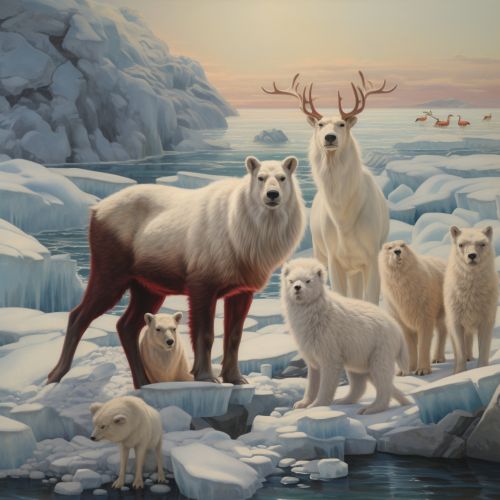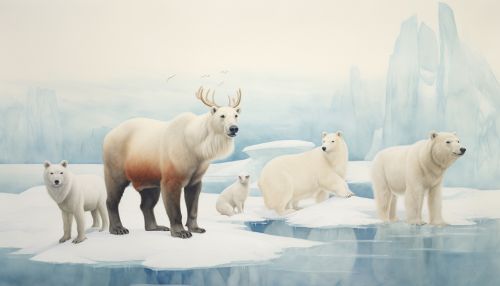Cold Adaptations in Arctic Mammals
Introduction
Arctic mammals have evolved a variety of adaptations to survive in the harsh, cold environment they inhabit. These adaptations range from physical changes, such as the development of thick fur and layers of fat, to behavioral adaptations, like hibernation and migration. This article will explore these adaptations in detail, focusing on a variety of Arctic mammal species.


Physical Adaptations
Fur and Skin
Many Arctic mammals, such as the polar bear and the Arctic fox, have thick fur that provides insulation against the cold. The fur is often white or light-colored, which helps these animals blend in with the snow and ice. Underneath the fur, these mammals have a layer of fat, known as blubber, which provides additional insulation and serves as an energy reserve during periods of food scarcity.
Body Size and Shape
Arctic mammals often have compact bodies with short limbs and tails, a shape that minimizes heat loss by reducing the surface area exposed to the cold. This is known as the Bergmann's Rule. For example, the Arctic hare has shorter ears and limbs compared to other hare species that live in warmer climates.
Specialized Features
Some Arctic mammals have specialized features that help them survive in their environment. For example, the Snowy owl has feathered feet to protect against the cold, and the Walrus has long tusks that it uses to pull itself out of the water onto ice.
Behavioral Adaptations
Hibernation and Torpor
Some Arctic mammals, such as the Arctic ground squirrel, undergo hibernation during the winter months when food is scarce. During hibernation, these animals enter a state of reduced metabolic activity, which allows them to conserve energy. Other Arctic mammals, like the Arctic fox, enter a state of torpor, a lighter form of hibernation, during which they remain active but reduce their metabolic rate to conserve energy.
Migration
Certain Arctic mammals, such as the Caribou, undertake long-distance migration to escape the harsh winter conditions and find food. These migrations can cover thousands of kilometers and are often undertaken in large groups.
Hunting and Foraging Strategies
Arctic mammals have developed unique hunting and foraging strategies to cope with the challenges of their environment. For example, the Polar bear is an excellent swimmer and hunts seals by waiting for them to surface at breathing holes in the ice.
Impact of Climate Change
Climate change poses a significant threat to Arctic mammals, as it is causing rapid changes in their environment. Rising temperatures are causing sea ice to melt, which affects species like the polar bear that rely on sea ice for hunting. Changes in precipitation patterns and vegetation are also impacting the availability of food for many Arctic mammals.
See Also
Adaptation to global warming in the Arctic Effects of climate change on terrestrial animals Biodiversity loss due to climate change
